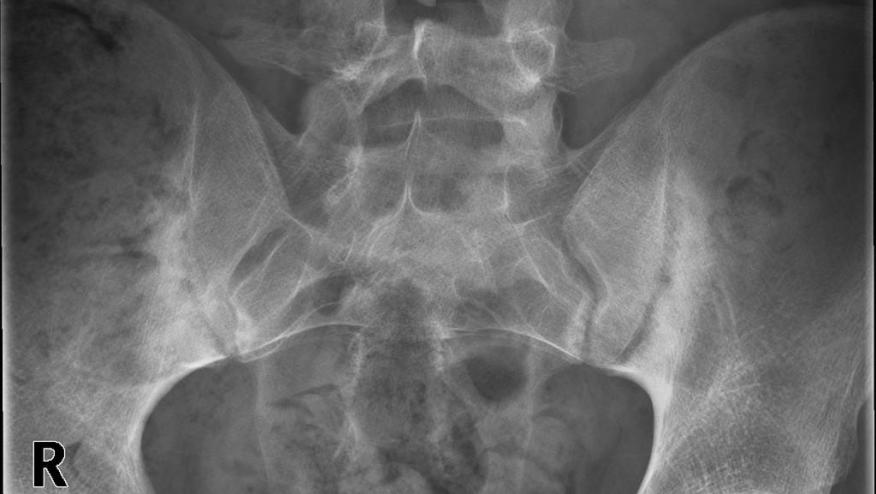Prolonged TNF Inhibitor Use Delays Sacroiliac Progression Save

While tumour necrosis factor inhibitors (TNFi) have been shown to alter/retard X-ray outcomes in peripheral inflammatory arthritis, the inhibitor effects of TNFi on axial skeletal progression in spondylitis has been difficult to prove, owing to difficulties in study design, identifying best cohorts and a presumed slower rate of change in the spine.
But a new study of TNFi in patients with early axial Spondyloarthritis (axSpA) has shown significant inhibition of radiographic sacroiliitis progression at 2 and 4 years after treatment initiation.
A long-term study of axSpA patients in the GESPIC (German Spondyloarthritis Inception) Cohort (with baseline sacroiliac radiographs) analyzed radiographic change according to therapy received.
A total of 301 axSpA patients (166 non-radiographic [nr-axSpA] and 135 radiographic [r-axSpA]) yielded assessments at 737 2-year radiographic intervals. Baseline TNFi use was seen in 3.0%, and 29%received at least one TNFi course during the entire follow-up period.
Patients receiving prior TNFi ≥12 months had a a significant decrease in the sacroiliitis score (β=-0.09 [95% CI -0.18, -0.01]. The longer the previous TNFi exposure, the less change in sacroiliac scores.
This effect was stronger in patients with nr-axSpA as compared to patients with r-axSpA, presumeably because nr-axSpA has less established, damage to the SI joint.
The effects of TNFi reduction of radiographic sacroiliitis progression was most evident between 2 and 4 years after treatment initiation.










If you are a health practitioner, you may Login/Register to comment.
Due to the nature of these comment forums, only health practitioners are allowed to comment at this time.